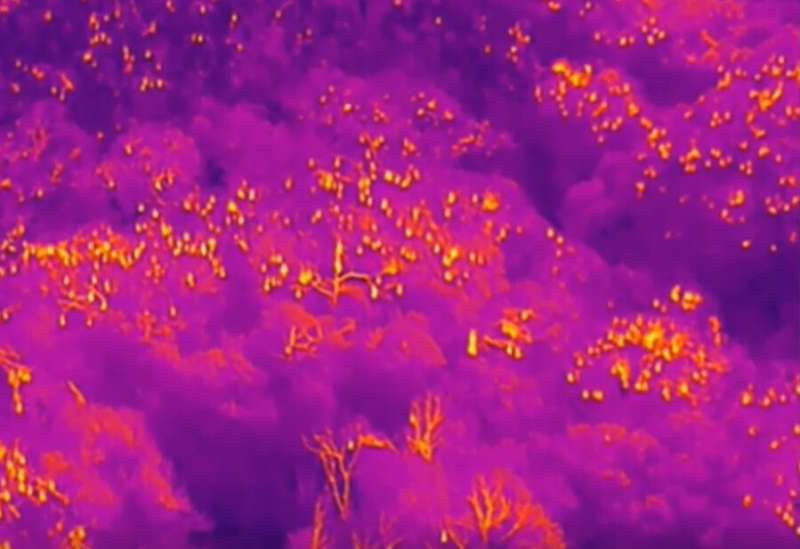Counting flying foxes by using drones equipped with thermal cameras

Scientists from Western Sydney University and the Taronga Conservation Society have published a new method in the journal Remote Sensing In Ecology and Conservation for detecting and counting flying-foxes in tree canopies by using thermal camera-equipped drones.
This innovative new method contributes to efforts to count gray-headed flying-foxes (Pteropus poliocephalus), a species listed as vulnerable to extinction due to population decline.
The new method is shown to be accurate and precise, by comparing ground counts of flying-foxes in single trees to counts obtained from the drone, from repeated drone surveys, and from multiple human counters.
The work also uses advanced image detection techniques including machine-learning and computer vision methods to semi-automate flying-fox counts from the drone-acquired imagery.
"We can now use drones to obtain accurate and precise measures of colony abundance semi-automatically, thus greatly reducing the amount of human effort involved for obtaining abundance estimates," said lead author and Master of Research graduate Eliane McCarthy at the Hawkesbury Institute for the Environment.
"At present there are two main methods for getting accurate counts of a flying-fox colony: during the day, when the flying-foxes are roosting and therefore quite static, or during the evening when they leave the roost to forage on nectar and fruit and can be counted as they depart the roost," said Ms McCarthy.

"However, there are several issues in conducting ground surveys: the terrain can be difficult and physically-challenging for counting personnel and their presence can disturb rooting flying-foxes, reducing the accuracy of the estimate. Fly-out counts rely on rapidly counting fast-moving animals at dusk, when the light is fading, complicating these assessments," said co-author Dr. John Martin, a research scientist at Taronga.
"We demonstrated that drone-acquired thermal imagery can be used to accurately and precisely quantify the abundance of flying-foxes in a roost, and that semi-automated methods for counting flying-foxes in thermal imagery are comparable to human assessments in their accuracy," said co-author Associate Professor Boer.
"This method is very valuable for reliably monitoring the abundance of individuals in flying-fox roosts and will aid in the conservation and management of this globally threatened group of flying-mammals, as well as other warm-blooded tree-roosting species," said senior author Associate Professor Justin Welbergen.
More information: Eliane D. McCarthy et al. Drone‐based thermal remote sensing provides an effective new tool for monitoring the abundance of roosting fruit bats, Remote Sensing in Ecology and Conservation (2021). DOI: 10.1002/rse2.202
Provided by Western Sydney University




















